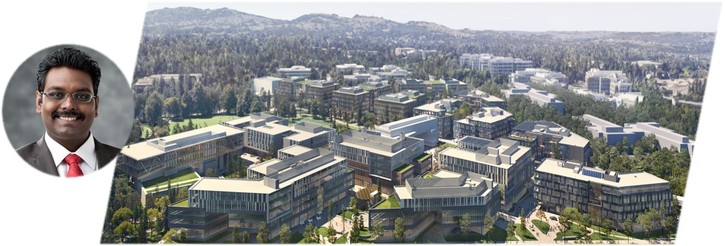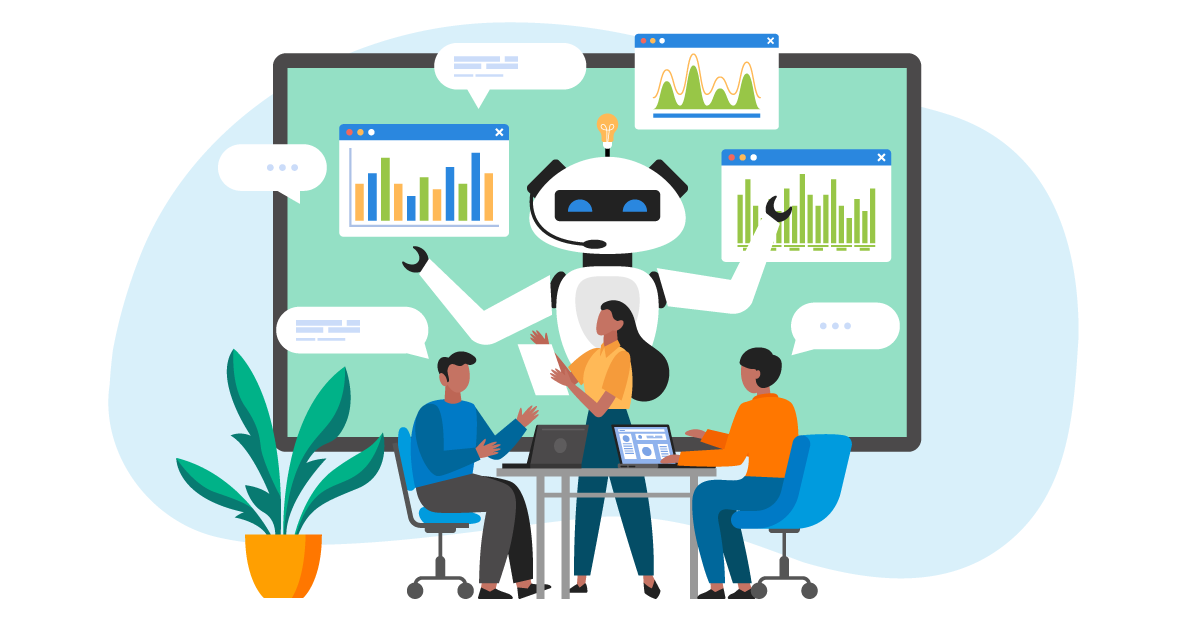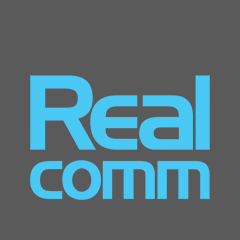Digitally Transforming Microsoft's Global Real Estate Portfolio: Emmanuel Daniel Discusses Strategy

RealcommEDGE talks with CoRE Tech 2019 co-chair Emmanuel Daniel of Microsoft. Emmanuel is responsible for building and delivering the Digital Transformation strategy for campuses across Microsoft and leads a global multidisciplinary team of architects and experience designers. He builds experiences that merge technology with the built environment, leading to the formation of spaces that respond to the needs of its users. As part of this role, he is also accountable for identifying, building and implementing the next generation of products that will make smarter and sustainable buildings.
Tell us about your role at Microsoft.
I'm part of the Applied Innovation and Incubation team at Microsoft. One of the main focuses of our team has been partnering with our real estate group to create smart spaces within a campus and to transform employee experiences through innovative technologies and devices. This work with the real estate team also extends to digitally transforming the employee experience in the Microsoft campuses worldwide, starting with the modernization of our East Campus in Redmond. Creating smarter spaces that enable productivity, that optimize time and resources across campuses and buildings is directly aligned to Microsoft's mission to empower every person and every organization on the planet to achieve more.
What are the major technology projects you started or completed in the last 12 months?
 We are reinventing the way to build. Instead of adding technology to an existing structure, we are building the structure based on the current and future technological needs.
We are reinventing the way to build. Instead of adding technology to an existing structure, we are building the structure based on the current and future technological needs.
This is exactly the concept we use for the modernization of Microsoft's East Redmond campus, one of the major projects I worked on in the last year. The 72-acre project will facilitate the addition of 17 new buildings, 2.5 million square feet of new workspace and 500,000 square feet of amenities which will accommodate 12,000 people when complete. To bring up these 17 buildings, we are deconstructing 14 buildings. I am in a unique position on the project; as part of a One Microsoft approach, I partner with the real estate group to lead a cross group team that helps define the digital transformation strategy for the campus, which involves reinventing the space from the shell and core to the tenant improvement phases of a building. This will give us the ability to make our buildings smart from the ground up allowing for improved experiences, adapted to the needs of the tenants.
Watch this video on Building a Modern Campus:

Adding technology to an existing building not only limits the amount of services you can provide - because it does not have the scale and scope required - but it is also an expensive task, because it requires retrofitting the building to allow holes in walls, running cables, adding devices and sensors, etc. The building may not have enough power or infrastructure to host those systems. For a connected campus with the ability to grow, we should make the building smart even before construction begins.
We also determined that a smart building is only smart if people get value for the services the building provides. It must be smart for anyone it serves: employees, visitors, guests, service providers, contract staff. There's always been this huge idea that anything could be done with technology. There's a risk in that idea, and we consciously put user experience first. What we wouldn't want to happen is to have this great technology showcase which nobody wants to use - because it doesn't speak highly to the user experience.
As we identified the type of experiences people want, we knew they had to be connected, accessible, sustainable, secure and scalable. As you build out this experiential aspect, what is the underlying technology? What types of devices are needed? How do we collect and analyze device data? How is it processed and stored? How is privacy enabled? Can we weave together all the independent building subsystems to create a unified experience? It was critical to provision for infrastructure with buildings, as they last for over 20 years - so that any type of future technology could be easily integrated.
It's a balance trying to future proof things. It's a challenge we debate every day. You don't want to build something in such a way that you never use it to full capacity. Our goal is optimizing the design to draw that fine line between how much we need, and the room needed for growth.
What will the campus look like in the future?
Our aspirational vision for digital transformation was to create an intelligent and intuitive workplace that harnesses the power of digital. Once the campus opens, the goal is providing the best employee experience that would make people feel amazed to work at Microsoft.

Everything is seamless, from the way you get to the campus (whether driving, carpooling or public transit) to entering the building and accessing the services within it. That's just one example, and it extends to any campus building and any connected activity, whether it's finding people, organizing your day, eating, having quiet time or physical activity. The goal is to create a campus where you can be the most productive version of yourself while also maintaining a balance of physical and emotional wellbeing. The beauty of it is we can create a service that anybody can use anywhere in the world - and they believe that service was specifically designed for them.
Were there any surprises as you discovered which experiences were important to people?
 There definitely were. Some are obvious, for example, meeting rooms - we know employees want a seamless experience where everything in that meeting works. But then you begin to think about unintentional meetings; how do we create avenues so people can bump into each other, enabling different types of collaboration? How do we allow people to find a space that suits productivity needs and generates satisfaction? We discovered it's not about beautiful spaces. Giving users the flexibility to choose, based on their needs at any given time is something that came out very quickly. This is not purely about technology - it's not about lights flashing and cameras going off-but allowing people to do what they want, where they want so they can achieve more. This is what a smart campus is all about.
There definitely were. Some are obvious, for example, meeting rooms - we know employees want a seamless experience where everything in that meeting works. But then you begin to think about unintentional meetings; how do we create avenues so people can bump into each other, enabling different types of collaboration? How do we allow people to find a space that suits productivity needs and generates satisfaction? We discovered it's not about beautiful spaces. Giving users the flexibility to choose, based on their needs at any given time is something that came out very quickly. This is not purely about technology - it's not about lights flashing and cameras going off-but allowing people to do what they want, where they want so they can achieve more. This is what a smart campus is all about.
What are your highest priority technology initiatives for the next 12 months?
Our biggest initiative is building a global platform on which we can integrate and connect multiple disparate building systems. The platform would allow us to easily connect to any building automation or subsystem, giving us seamless access to data to drive intelligence of how that space could be more effectively utilized.
In addition to the global platform, a key issue is the translation of the experiences and validating their business and technical feasibility. This involves identifying: 1) the hardware; 2) the protocols and connectivity; 3) whether these experiences must be custom built; and 4) who in our partner ecosystem we should collaborate with. There may be certain experiences that are dependent on devices or hardware that don't exist in the market today; we let our partners know what is valuable and what we need so that we can work on ideas and solutions together.
Microsoft is a very partner-focused organization, and an important goal was determining how to engage the multiple partners: identifying their strengths, mapping them within the whole build life cycle. It's important to identify the various phases because you may have different partners if you are designing a building, building it, or managing it.
What technology, automation or innovation trends do you see impacting corporate real estate the most?
I think the ability to seamlessly unite dataflow across systems and subsystems is one of the largest enablers going forward. There has been massive innovation with technology that goes into a building in areas like PoE, PoE++, mesh networks, visualization and simulation, devices and sensors. If you look at technology areas such as computer vision, natural language processing, artificial intelligence, robotics; all have direct application to enabling services in a building where a person spends most of their time. As the individual systems start to get better functionality, the ability to unite dataflow will be crucial. No individual supplier can work in a silo; all must share and use data to deliver value.
Data collection is another area because of the variety of standards across the family of devices-which are also evolving. In deciding how best to use sensors to support plug and play, to support varying data collection needs (while avoiding duplication), we look at the best way to collect this data. Should data collection go through the lighting fixture where we can set up a mesh network, or is there a better option? There are companies that offer smart glass, lights, infrastructure. Other vendors talk about connected assets, which can provide you the data you need. You also have 5G; how do we incorporate 5G in the services we're designing? All of these will affect future buildings.
Hear more from Emmanuel, along with co-chairs Paul Maximuk of Ford Land and Matthew Montanes of JPMorgan Chase on digital transformation and Real Estate Strategy at the CoRE Tech opening session on Nov. 13 in Silicon Valley. CoRE Tech 2019 is the leading conference on technology, automation and innovation for the Corporate Real Estate and Facilities industry. Register today!
This Week’s Sponsor
Triacta designs and manufactures revenue grade meters and data acquisition devices for energy management, tenant billing, and building control applications. Every Triacta meter ships with software that combines meter management, automated data collection, powerful analysis tools, and flexible data export capabilities—everything needed to create and manage a metering infrastructure.
Read Next
 5/29/2025
5/29/2025
AI Can’t Fix Bad Data. These Ideas Can Get You on the Right Track. Real estate visionaries constantly integrate innovative technology to make their organizations more efficient.
 5/22/2025
5/22/2025
Managing Building Automation and Integration Like an Investment Portfolio What if your building automation and integration decisions were managed with the same precision, discipline, and long-term vision as Warren Buffett’s investment portfolio?
 5/15/2025
5/15/2025
Tech, Talent and Transformation: 2025 Digie Finalists Announced For 27 years, Realcomm has presented the Digie Awards to acknowledge companies, real estate projects, technologies, and individuals that have advanced the commercial real estate industry through the strategic use of technology, automation, and innovation.
 5/15/2025
5/15/2025
Empowering Space Management with Data-Driven Visualization For effective CRE space management, it’s critical to centralize lease data, maximize rental square footage (RSF), improve energy efficiency and reconfigure spaces to meet changing needs.





%20(1)%20(1)%20(1).png)





